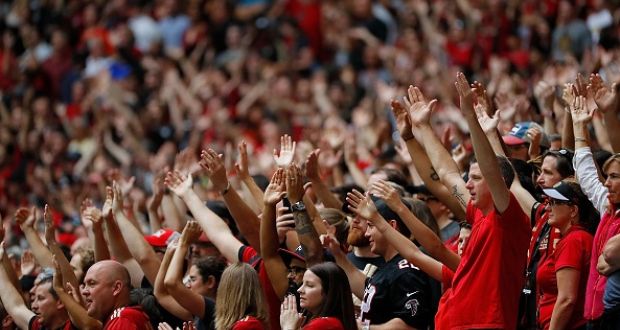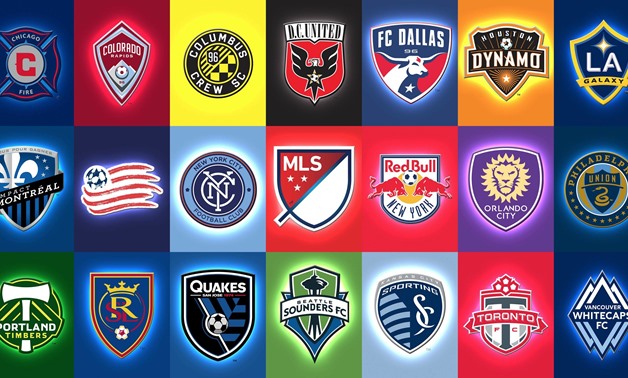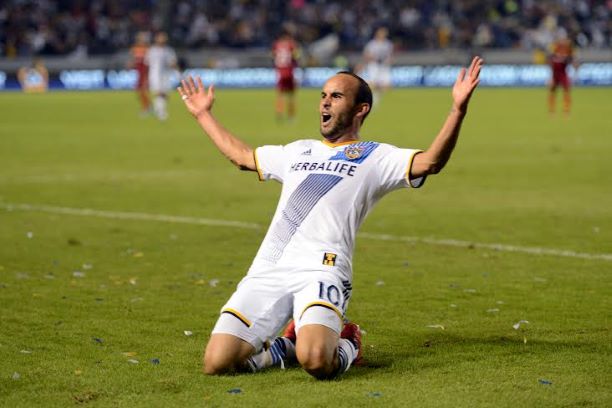Luuk de Jong, Huntelaar and Dost represent the evolution of the Dutch number 9
Luuk de Jong, Huntelaar and Dost represent the evolution of the Dutch number 9
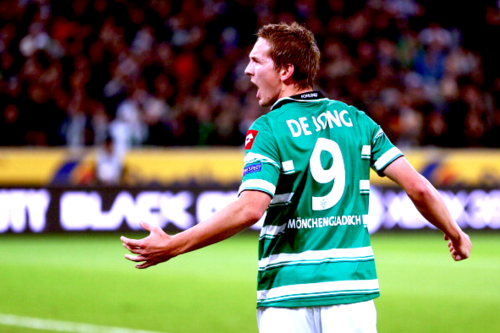

It’s strange, in a sort of good way, how a song can remind you of someone, their image instantly etched into your mind. "The Saints Are Coming" (Green Day/U2 version), is one example, the goal music at De Grolsch Veste – home of FC Twente – now forever associated with Luuk de Jong, largely responsible for many of its airing last season, now plying his trade in Germany he’s hoping for a similar amount of encore performances.
His departure last summer, along with Bas Dost who moved from Heerenveen to Wolfsburg, confirmed the long-held view: one of the Netherlands chief exports is ‘number nines’. Both are the latest in a long line of Dutch strikers, a lineage as decorated as Italian defenders, but what excites most onlookers is not their records (which speaks for itself) but their gradual evolution: getting better, more uncanny in front of goal, both – notably De Jong – determined to be become renowned for scoring in the unlikeliest of situations. Ultimately to attain the title of number nine par excellence.
After conquering the Eredivisie a logical step would be the Bundesliga. A league equally synonymous with great strikers: Gerd Müller, Uwe Seeler, Klaus Fischer and Karl-Heinz Rummenigge to name but a few. Those illustrious figures of the past serve as a inspiration just like compatriots Henk Groot, Willy van der Kuijlen, Marco van Basten and Ruud Geels. On arrival it meant three Dutch numbers 9s in the same foreign league. The other, is already a household name and last season’s Bundesliga golden boot winner – first Dutch striker to do so – Klaas-Jan Huntelaar.
As time move so do trends, today for most up-and-coming strikers Huntelaar is their reference. Though the striker many still attempt to emulate is Van Basten still held as a beacon, ultimate example of near perfection, technique and finesse intertwined in unadulterated ruthlessness.
De Jong was still an infant during Van Basten’s heyday, the last two years seen a sharp rise in his development, morphing into a prototype of your archetypal Dutch striker; part-playmaker, part-finisher, no better example for him than Huntelaar: a modern predator turned all-rounder. Every game Huntelaar cuts an impassive figure, mind focused, void of distraction and feeling every fibre geared for a single purpose. Once that mission is done the child in him escapes but just as quickly his mask goes back up and the cycle starts again.
To say goals is an obsession would be an understatement. It’s compulsive. His one addiction: “when you hear it [ball hitting the net] you spend the whole of the next week longing to hear it again,” Huntelaar told UEFA.com, “It’s like the elixir of life."
Louis van Gaal, current Oranje boss, described him as the best inside the penalty area "bar none”. But in recent years Huntelaar has become much more. His all-round game: awareness, vision, movement and link-up play, stands out greater than it has done before. Huntelaar’s natural game revolves around an innate ability to score just about every type of goal, often in the most unlikely of situations, whether creating for himself or finishing a team effort. It can be ugly or laced with finesse, his ambidexterity makes it easier as well as being acrobatic and dominant in the air.
De Jong seems to be treading on the same path as Huntelaar. “I’d love to someday be as good as him,” but start to life in Germany has been a challenge. A month ago he returned from a spell on the sidelines with a knee injury, typically with a goal against Fenerbahçe in the Europa League, before his layoff much of the talk centered around his settling in. "Luuk before his injury was trying to make his mark,” Gladbach sporting director Max Eberl told the clubs website. “We don’t just have high expectations of him. He radiates it.”
His move to Mönchengladbach came after weeks of speculation linking him with sides in England, Portugal and in other parts of Germany. He opted for Gladbach after receiving a seal of approval from his father, who also acts as his advisor, also the location was fitting as it’s only an hour or so drive away from his family home in the Netherlands. “I’m a family person and need them, and my friends, around me.” At a cool €12M, it represents Twente’s biggest sale, as well as placing a heavy burden on his shoulders.
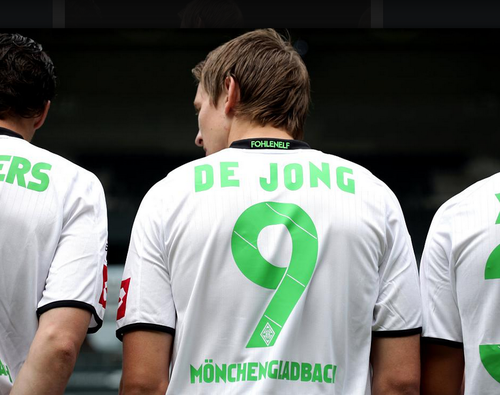
Before making the transition he was in regular conversation with manager Lucien Favre. “I have spoken to (Gladbach coach Lucien) Favre several times,” he told Bild. “We talked about how he wanted me to play which fits perfectly with my style.” His first five league games however yielded one goal and (unnecessary) comparisons with recently departed Marco Reus, whose void he was expected to fill, didn't help.
A bemused Reus told Bild. “That he [Luuk] is getting so much criticism is exaggerated and uncalled for,” the Borussia Dortmund winger said. “Let’s not forget he just joined. He needs to adjust his time will come.”
The comparison or attempts by the media bewildered Favre. “Luuk is a striker,” as he bluntly put it, adding assimilating to a new competition and system will take time. “This league is on a different level compared to the Eredivisie,” given Huntelaar and Roy Makaay before him settled well it wasn’t an issue that was keeping Favre up late at night. “I have no doubt about his qualities.” Anyone who’s watched him in last eighteen months at Twente would say the same.
No one could deny his palpable technical attributes – aerially supreme, as well as acrobatic, ice cold finishing – much of which enhanced by his physical build (standing at six feet two) and centres on a sharp brain, blessed with insight, fleet of foot, and foresight. The most successful Dutch strikers are the most technically astute.
De Jong, like most of his compatriots, is more than comfortable on the ball. His movement without it, blessed with electric pace, is aided by instinctive understanding of his surroundings – drawing defenders out of position with clever runs; creating space for himself and teammates made him ideal in Twente’s system which largely drew much from tenets of the Dutch footballing philosophy: 'number nine’ the focal point of attack, a cerebral thinker in the mould of Ruud van Nistelrooy.
What separates him from the good strikers is the wherewithal of being involved in a build-up to an attack like an extra playmaker, dropping deep and playing between the lines or in the wide areas, as he did at Twente last season. This versatility also acted as a hindrance, often under Co Adriaanse – during his brief tenure in Enschede – was used as a deep-lying forward (or a classical number ten), his commitment to the team, putting them first, greatly enhanced his work ethic and adaptability – but to say he wasn’t content would have been an understatement.
Twente were winning games, but he’d rather – not Marc Janko – be the focal point of their attacks. His best position is leading the line, a classical Dutch 'number nine’, who knows every nook and cranny inside the penalty area. “We all know what kind of striker I am.” More than capable of creating his own opportunities, the service provided from the flanks last season notably from Ola John in part contributed to his best return in front of goal. However, his 25 goals weren’t good enough to win him the Eredivisie golden boot which went to rival Bas Dost.
It was one of the more memorable races in recent times Dost in the end winning by seven goals. Similar yet different to De Jong (if that makes any sense), his playmaking attributes is the weakest aspect of his game, but steadily improving, similar to Sporting’s Ricky van Wolfswinkel.
He is what the Dutch would describe as a 'killer’ (not in the literal sense) but a striker simply built to do the one job he’s designed to, no added complications which the Dutch love. His languid style and height supplements his technique making him more adept as a target man – teammates feeding off him – nonetheless mobile as he demonstrated with his match winner against Dortmund, latching onto a lovely weighted through ball by Diego, coolly dispatching past Roman Weidenfeller. The strike brought his tally to seven goals in 15 league appearances.
His predatory instincts unyielding – a change of managers, Lorenz-Günther Köstner replacing Felix Magath who signed him, hasn't affected his assimilation, in fact he scored on Köstner’s first game in charge – De Jong too is the same, but like Robin van Persie is also a creator. If you were to breakdown Dost’s goals last season a good percentage would have come from the service of Luciano Narsingh. The two were at times the football equivalent of Scottie Pippen and Michael Jordan, autopilots of Heerenveen’s remarkable climb up the table, whenever one had the ball he knew exactly where the other was.
The obsession the Dutch have of the striker needing to be more than a striker was one of the reasons (albeit not publically stated) why Dost and Van Wolfswinkel seldom featured under Bert van Marwijk when in charge of the Dutch national team and why De Jong was on the periphery understudying Van Persie and Huntelaar. It’s worth pointing out his remodelling occurred outside the Eredivisie, De Jong has started to go through that phase (albeit three years earlier than Huntelaar). And there’s no reason Dost can’t do the same.
When the serial goal-scorer in them escapes, a familiar question will be asked, 'why do the Dutch continue to produce quality forwards?’ Good education, training, youth development program? Or to borrow a line from Aubrey Woods: “Do you ask a fish how it swims? A bird how it flies? Of course not they do it because they were born to do it.”
This article is written by our Dutch football encyclopaedia Mohamed Moallim. You can follow him on twitter at @jouracule. Comments below please.


